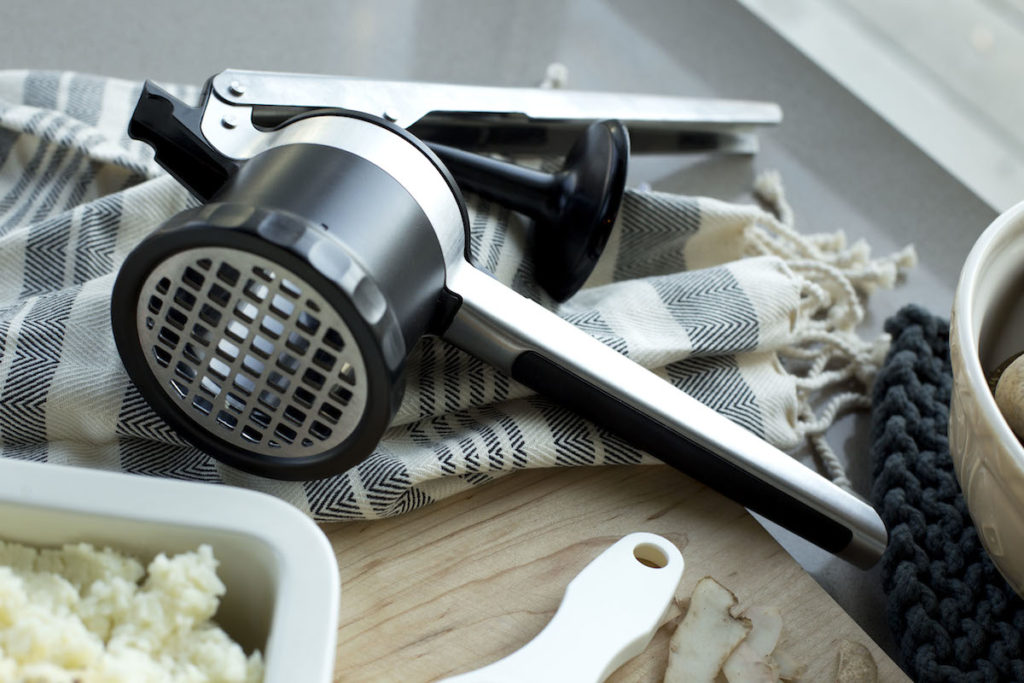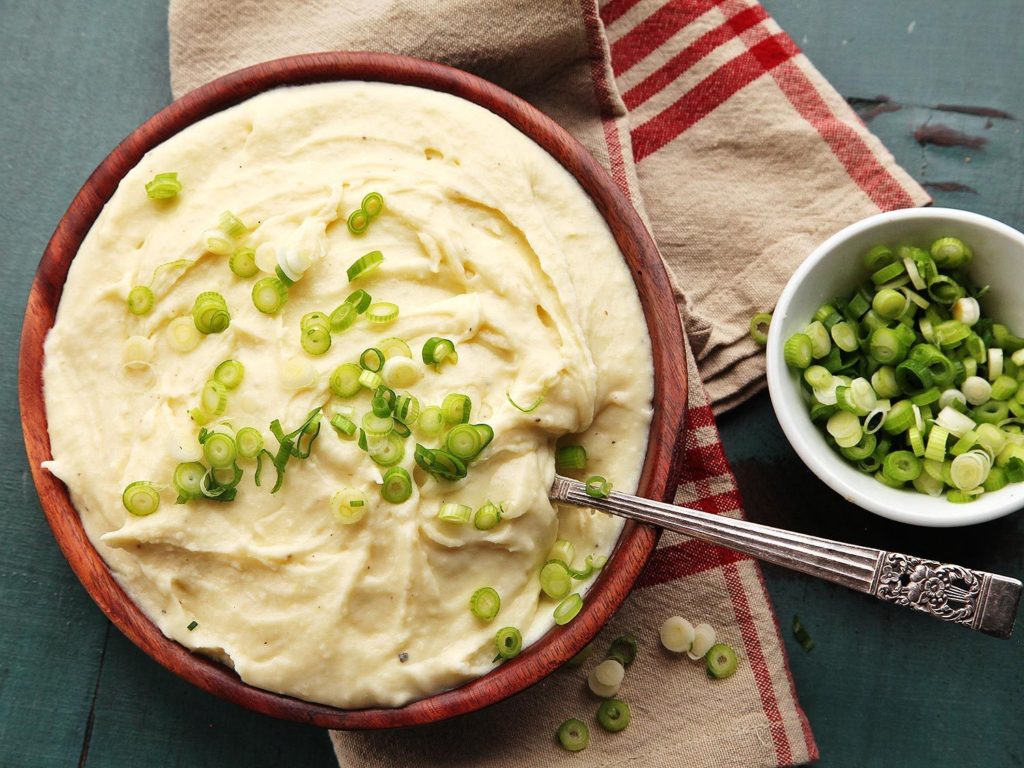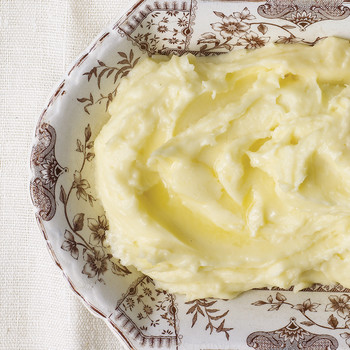I can’t tell you how to make “perfect” mashed potatoes. I can’t be sure what your version of perfect mashed potatoes includes.
Do you prefer: Creamy or Fluffy | Smooth or Chunky | Potato Peels or No Potato Peels ??? Do you add: Milk or Cream or Sour Cream or Cream Cheese or Butter or Cheese ???
With all those variable and components contributing to the “perfect” mash, we’re convinced we’ll never reach a general consensus! But, there is one thing we can alllll agree on – mashed potatoes should never be gummy, gluey, and overworked! Right??
So, how can you avoid overworked mashed potatoes? The Gygi Guide to Mashed Potatoes will help you make your version of perfect potatoes.
Potato Starch
The culprit of gluey mashed potatoes is starch. When potatoes are over-mashed, over-stirred, and over-worked the potato releases too much starch. The starch thickens the mash, resulting in an undesirable consistency.

In order to achieve fluffy or creamy potatoes, you must have a handle on the potato starch.
Type of Potatoes
Perfect potatoes start with they type of you potato you are using. The most common types are Russet and Yukon Gold.
Russet Potatoes are the most common type of potato. With dark brown skins and bright white centers, they are considered the iconic Idaho Potato. Russets are higher in starch, which means they can easily become gummy and gluey. But, Russet potatoes also break down very easily, meaning they will easily mash without becoming over worked.
Yukon Gold Potatoes are golden yellow in color – both the skin and the center. They naturally contain less starch, but they require a bit more cooking and mashing to become consistently smooth.
Generally speaking, Russet potatoes result in a fluffier mash. While Yukon Gold potatoes result in a creamier mash.
Mashing Method
How you mash your potatoes is just as important as the potatoes you use.

Traditional mashers are best if you’re hoping for chunky mashed potatoes. But, if you want a smooth and creamy mash, it is difficult to achieve without overworking the batch.
Another popular option is whipping your potatoes in a stand mixer. We have found this to be problematic, for the same reason as the masher – by the time the mixture was consistently smooth, the batch was overworked and gluey.

For this reason, we prefer to do our mashing with a potato ricer. Pressing the potato through the perforations in a masher released the least amount of starch, resulting in the fluffiest and smoothest potatoes. The potatoes made with the ricer were also richer and more buttery tasting. They were preferred by all of our tasters.
Rinsing Potatoes
You can further reduce the starch levels by rinsing your potatoes twice. First, peel and dice the potatoes into 1 to 2 inch cubes. Then, place in a colander and rinse the potatoes until the water runs clear. Cook your potatoes until soft (about 20 mins). Drain water and rinse a second time, further eliminating any starch on the potatoes.
Once you have control of the potato starch, you’re ready to start cooking.
Try some of these recipes to find your perfect mashed potato:
Keeping Mashed Potatoes Warm
The trickiest part of Thanksgiving dinner is presenting every dish at the same exact moment. Luckily, potatoes can be made earlier in the day and held at a safe temp until dinner is served. Read more about keeping mashed potatoes warm here.
Mashed Potato Tools

To learn all our Thanksgiving Tips, read our guide to Thanksgiving here.








